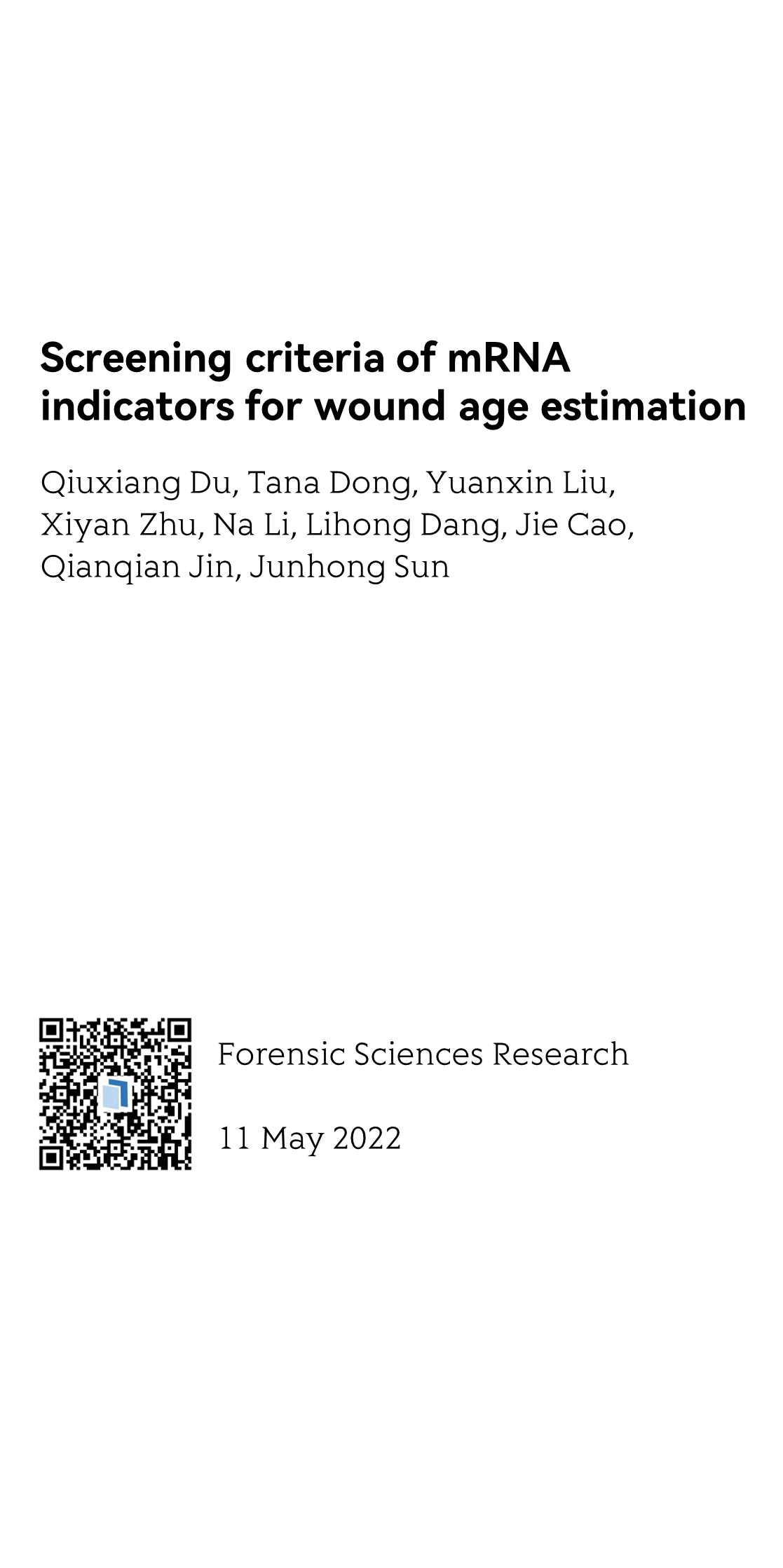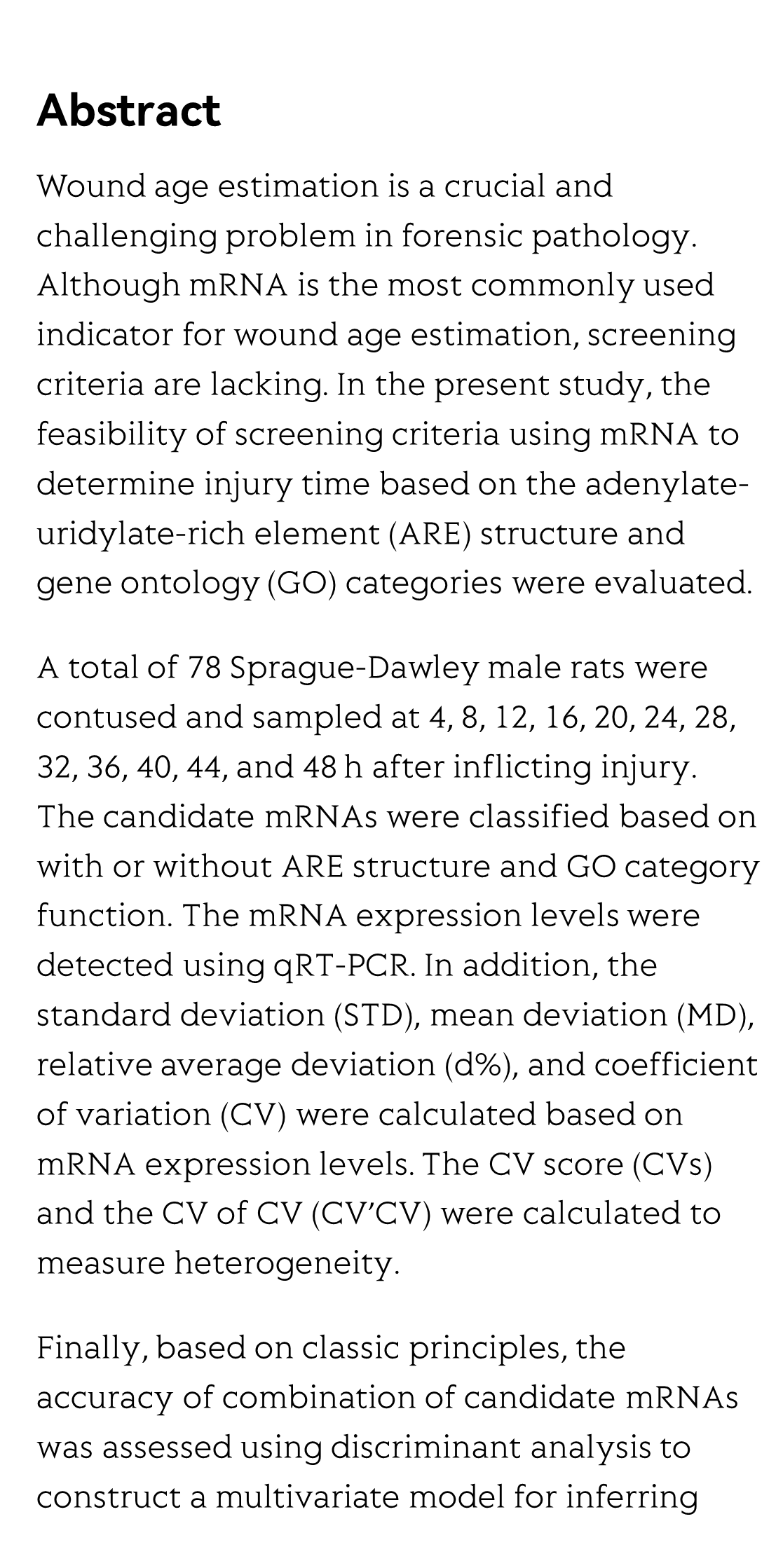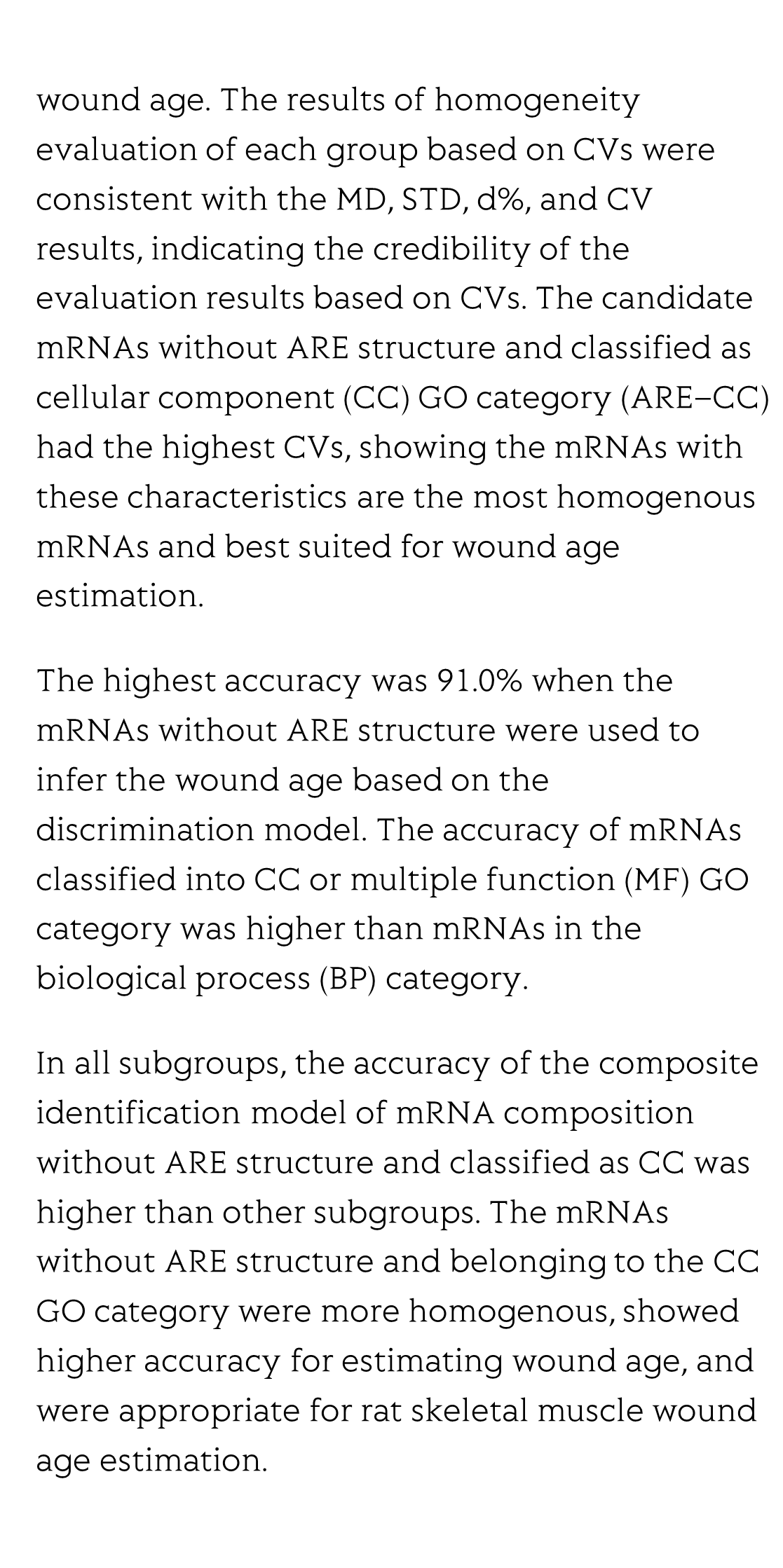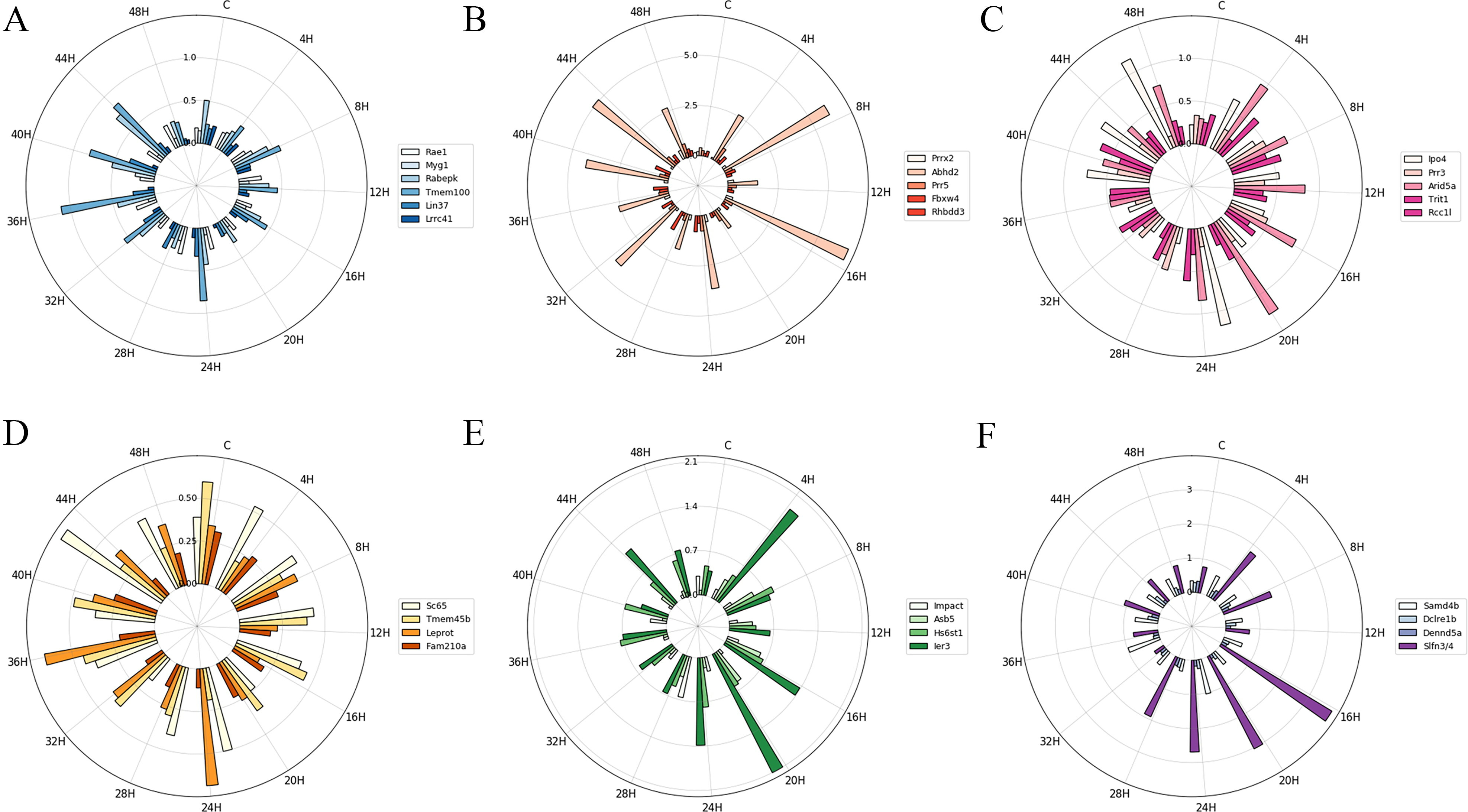(Peer-Reviewed) Screening criteria of mRNA indicators for wound age estimation
Qiuxiang Du 杜秋香 ¹, Tana Dong 董塔娜 ², Yuanxin Liu 刘元新 ¹, Xiyan Zhu 朱细燕 ³, Na Li 李娜 ¹, Lihong Dang 党丽虹 ¹, Jie Cao 曹洁 ¹, Qianqian Jin 靳茜茜 ¹, Junhong Sun 孙俊红 ¹
¹ School of Forensic Medicine, Shanxi Medical University, Jinzhong, China
中国 晋中 山西医科大学法医学院
² Shandong Public Security Department, The Institute of Criminal Science and Technology, Jinan, China
中国 济南 山东省公安厅 济南市公安局刑事科学技术研究所
³ Department of Military Traffic Medicine, Army Characteristic Medical Center, Chongqing, China
中国 重庆 中国人民解放军陆军特色医学中心 军事交通医学部
Abstract
Wound age estimation is a crucial and challenging problem in forensic pathology. Although mRNA is the most commonly used indicator for wound age estimation, screening criteria are lacking. In the present study, the feasibility of screening criteria using mRNA to determine injury time based on the adenylate-uridylate-rich element (ARE) structure and gene ontology (GO) categories were evaluated.
A total of 78 Sprague-Dawley male rats were contused and sampled at 4, 8, 12, 16, 20, 24, 28, 32, 36, 40, 44, and 48 h after inflicting injury. The candidate mRNAs were classified based on with or without ARE structure and GO category function. The mRNA expression levels were detected using qRT-PCR. In addition, the standard deviation (STD), mean deviation (MD), relative average deviation (d%), and coefficient of variation (CV) were calculated based on mRNA expression levels. The CV score (CVs) and the CV of CV (CV’CV) were calculated to measure heterogeneity.
Finally, based on classic principles, the accuracy of combination of candidate mRNAs was assessed using discriminant analysis to construct a multivariate model for inferring wound age. The results of homogeneity evaluation of each group based on CVs were consistent with the MD, STD, d%, and CV results, indicating the credibility of the evaluation results based on CVs. The candidate mRNAs without ARE structure and classified as cellular component (CC) GO category (ARE–CC) had the highest CVs, showing the mRNAs with these characteristics are the most homogenous mRNAs and best suited for wound age estimation.
The highest accuracy was 91.0% when the mRNAs without ARE structure were used to infer the wound age based on the discrimination model. The accuracy of mRNAs classified into CC or multiple function (MF) GO category was higher than mRNAs in the biological process (BP) category.
In all subgroups, the accuracy of the composite identification model of mRNA composition without ARE structure and classified as CC was higher than other subgroups. The mRNAs without ARE structure and belonging to the CC GO category were more homogenous, showed higher accuracy for estimating wound age, and were appropriate for rat skeletal muscle wound age estimation.
Data-driven polarimetric imaging: a review
Kui Yang, Fei Liu, Shiyang Liang, Meng Xiang, Pingli Han, Jinpeng Liu, Xue Dong, Yi Wei, Bingjian Wang, Koichi Shimizu, Xiaopeng Shao
Opto-Electronic Science
2024-02-24







